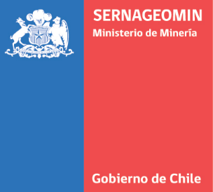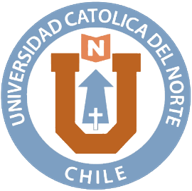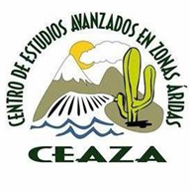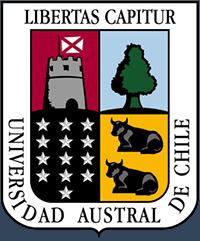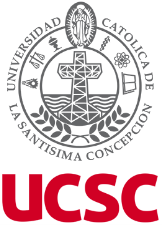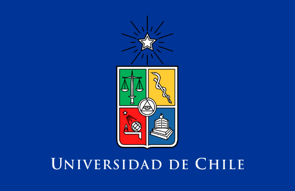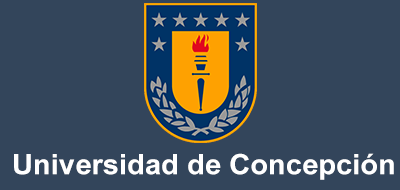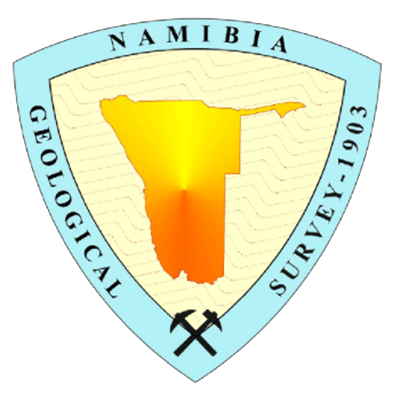Cluster C - Background
Three main N-S trending geomorphic zones constitute the study area: the Coastal Cordillera, Central Depression and the western Andean flank rising to the Precordillera. Due to the widespread coincidence in direction of these zones with climate zoning (particularly between 19º and 23ºS) and/or the source areas of their sediments, the Earth surface features and sediments in the Costal Cordillera have the greatest propensity to record the history of extreme hyperaridity and those in the Central Depression and along the western Andean Flank the precipitation fluctuations through time in the Precordillera.
The Coastal cordillera is constructed from a block-faulted Paleogene landscape (Allmendinger and González, 2010; Allmendinger et al., 2005; Carizzo et al., 2008; Dunai et al., 2005; Mortimer and Saric, 1975; Tosdal et al., 1984). The range is cut by canyons and bordered by a high cliff (600-1900 m) and a zone of marine terraces to the west (Ortlieb et al., 1995; Ortlieb et al., 1996; Radtke, 1989; Regard et al., 2010). To the east the longitudinal Central Depression is infilled by Neogene deposits shed from the Precordillera, which have since been locally structurally disturbed (Evenstar et al., 2009; Mortimer and Saric, 1975). In the Andes stratovolcanoes rise above the Andean plateau and are surrounded by internal drainage basins (Mortimer, 1973). The old tectonically dissected landscape in the Coastal Cordillera has a marked lack of fluvial landscape features and is best preserved between Arica and Antofagasta (Fig. 1, Carrizo et al. 2008, Dunai et al. 2005, Mortimer and Saric 1975). Miocene surface ages are widespread in the core of this area (Carizzo et al. 2008; Dunai et al. 2005; Evenstar et al. 2009). South of Antofagasta this old landsurface is skeletally preserved above younger regional erosion surfaces (Mortimer and Saric, 1975). The younger erosion surfaces were active into the Pliocene (Amundson et al., 2012a; Jungers et al., 2013; Placzek et al., 2010). A narrow, few km wide, band along the entire coast receives precipitation as fog and rare rainstorms, causing localized denudation in the Coastal Cordillera and corresponding deposition (Baker et al., 2013; Carizzo et al., 2008; González et al., 2006; Vargas et al., 2006).
The Central Depression (Pampa Tamarugal) is an elongate, N-S basin which terminates at the coast north of Arica. The surface of the Pampa rises towards the Andean flanks, and although some deep canyons cross the Pampa to the sea, the basin acts as base level for most of the streams descending from the Andes. It is consequently an area of ephemeral lakes and salt flats and holds a corresponding sedimentary record since the Oligocene (Hartley and Evenstar, 2010; Kirk-Lawlor et al., 2013; Pueyo et al., 2001). South of Baquedano (23º20'S) the Pampa consists of alternating basins and ranges which rise in height eastwards. Drainage from the Andes in the region between Baquedano and the latitude of Paposo (25ºS) is mostly ponded in the Pampa area, but south of Paposo drainage normally connects to the coast (Mortimer and Saric, 1975; Rehak et al., 2010). The southern terminus of our study area (~25.5ºS) is largely coincident with the disappearance endorheic (internally drained) basins in the Coastal Cordillera and Central Depression (Rehak et al., 2010), witness to the increasing long-term availability of water to the south.
Due to the long term hyper-aridity large portions of the Atacama Desert are covered in gypsum dust and crusts originating from atmospheric deposition (Ericksen, 1981; Michalski et al., 2004; Rech et al., 2003). These are particularly well preserved in the northern portion of the study area (area of Miocene relict surfaces in Fig. 1). Likewise the Atacama Desert is known for its economic nitrate and iodate deposits (Ericksen, 1981; 1983), whose preservation and accumulation by atmospheric deposition are intrinsically linked to long-term hyperarid conditions (Böhlke et al., 1997; Michalski et al., 2004).
While the general patterns are known, quantitative data is spatially very patchy. Our current knowledge on the Earth surface evolution in the Atacama is characterized by early, sweeping, often qualitative descriptions considering regional gradients in climate and landscape (Brüggen, 1950; Ericksen, 1981; 1983; Mortensen, 1929; Mortimer, 1980; Mortimer and Saric, 1975) and highly sophisticated modern quantitative, but regionally biased and patchy, information. The majority of studies on soils (Ewing et al., 2005; Ewing et al., 2008b; Ewing et al., 2006; Rech et al., 2003), hillslope processes and sediment transport (Amundson et al., 2012a; Jungers et al., 2013; Kober et al., 2007; Owen et al., 2003; Owen et al., 2013; Owen et al., 2011a; Placzek et al., 2010), climatic proxies (Betancourt et al., 2000; Díaz et al., 2012; Gayo et al., 2012b; Latorre et al., 2013; Maldonado et al., 2005; Nester et al., 2007; Quade et al., 2008) skirt the zone of extreme hyperaridity (< 2 mm/a) and are carried out in areas that today receive rare but appreciable amounts of precipitation (rainstorms; Chong 1984) and/or depend on runoff from the Precordilliera (Chong, 1984; Houston, 2006b). To date only a handful of studies investigated the Earth Surface processes in the driest part containing the Miocene relict surfaces (Carizzo et al., 2008; Dunai et al., 2005; Evenstar et al., 2009; Loveless et al., 2009). As result of the different areas investigated, each with potentially different climatic history and the different sensitivity and the nature of proxies used, there is no consensus on the duration of hyperaridity in the Atacama or of the intensity/duration of transient wetter periods in the past.
Some important environmental archives have not yet been, or not used to full effect, to date. Exemplarily these are (i) Neogene sediments in endorheic basis of the Coastal Cordillera, which could yield continuous records of erosion and sedimentation, serving as proxy for climatic conditions, and (ii) quantitative interpretation of topographic and hydrologic patterns, which could resolve long term and transient regional differences in runoff and erosion.
- Sediments in the Central Depression and the Andean foreslope have successfully been used to reconstruct runoff from the Precordillera (Evenstar et al., 2009; Hartley and Chong, 2002; Hartley and Evenstar, 2010; Kirk-Lawlor et al., 2013; Latorre et al., 2013; Sáez et al., 1999; Saez et al., 2012). In contrast, the few, but available endorheic basins of the Coastal Cordillera (Fig. 1) have not been explored to date. The main challenge for using them as archives will be obtaining reliable chronologies covering the Neogene. To date volcanic ashes provide the main tie points for chronologies in sedimentary records (Hartley and Evenstar, 2010; Sáez et al., 2012). They are reliable markers but occur sporadically. Detailed Neogene chronologies (Sáez et al., 2012) are rarely obtained; datable fossils (Díaz et al., 2012; Latorre et al., 2013; Maldonado et al., 2005) are absent beyond the radiocarbon time-scale (>50 ka).
- Quantitative analysis of topography and drainage networks have been shown to be powerful tools to extract long-term and large scale information on climate conditions and transient disturbances along the western flank of the Andes (Montgomery et al., 2001; Rehak et al., 2010). These studies (Montgomery et al., 2001; Rehak et al., 2010) used 30’’ (~1000 m) resolution (GTOPO30) and 90 m resolution SRTM data (USGS, 2007), respectively, which are adequate to resolve large scale trends investigated (Montgomery et al., 2001; Rehak et al., 2010), but insufficient to retrieve reliable information on crucial parameters such as drainage density (Collins and Bras, 2010; Perron et al., 2009; Solyom and Tucker, 2004). Digital elevation models (DEMs) with a resolution better than 15 m are required for this purpose (Zhang and Montgomery, 1994). High-resolution DEMs are currently not available for most of the Atacama, a situation that is expected to change during the course of the proposed project (Krieger et al., 2013).
The ambiguity of the timing of uplift of the Andes (Barnes et al., 2012; Ehlers and Poulsen, 2009; Garzione et al., 2008; Insel et al., 2012; Mulch et al., 2010; Poulsen et al., 2010; Rech et al., 2006) affects our ability to interpret some climate archives. The terminations of periods of supergene enrichment in porphyry copper deposits in the Atacama Desert (Fig. 1) can be either read as either purely climatic (Alpers and Brimhall, 1988; Bouzari and Clark, 2002; Sillitoe and McKee, 1996) or as episodes of incision, partially in response to uplift (Clarke, 2006). Also does uplift of the Andes affect the sediment archives in the Central Depression (Hartley and Evenstar, 2010; Kirk-Lawlor et al., 2013). To resolve ambiguity in causality it is therefore necessary to investigate climate archives/proxies that are independent from effects of Andean uplift, other than its inferred far field climatic consequences (Barnes and Ehlers, 2009; Barnes et al., 2012; Ehlers and Poulsen, 2009; Houston and Hartley, 2003; Jeffery et al., 2012; Poulsen et al., 2010; Rech et al., 2006).
















